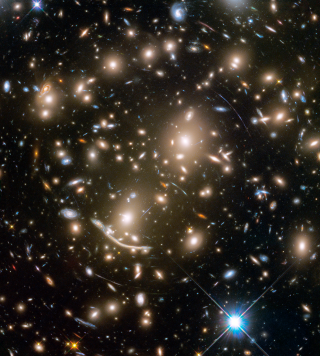Bibcode
Sánchez, S. F.; Kennicutt, R. C.; Gil de Paz, A.; van de Ven, G.; Vílchez, J. M.; Wisotzki, L.; Walcher, C. J.; Mast, D.; Aguerri, J. A. L.; Albiol-Pérez, S.; Alonso-Herrero, A.; Alves, J.; Bakos, J.; Bartáková, T.; Bland-Hawthorn, J.; Boselli, A.; Bomans, D. J.; Castillo-Morales, A.; Cortijo-Ferrero, C.; de Lorenzo-Cáceres, A.; Del Olmo, A.; Dettmar, R.-J.; Díaz, A.; Ellis, S.; Falcón-Barroso, J.; Flores, H.; Gallazzi, A.; García-Lorenzo, B.; González Delgado, R.; Gruel, N.; Haines, T.; Hao, C.; Husemann, B.; Iglésias-Páramo, J.; Jahnke, K.; Johnson, B.; Jungwiert, B.; Kalinova, V.; Kehrig, C.; Kupko, D.; López-Sánchez, Á. R.; Lyubenova, M.; Marino, R. A.; Mármol-Queraltó, E.; Márquez, I.; Masegosa, J.; Meidt, S.; Mendez-Abreu, J.; Monreal-Ibero, A.; Montijo, C.; Mourão, A. M.; Palacios-Navarro, G.; Papaderos, P.; Pasquali, A.; Peletier, R.; Pérez, E.; Pérez, I.; Quirrenbach, A.; Relaño, M.; Rosales-Ortega, F. F.; Roth, M. M.; Ruiz-Lara, T.; Sánchez-Blázquez, P.; Sengupta, C.; Singh, R.; Stanishev, V.; Trager, S. C.; Vazdekis, A.; Viironen, K.; Wild, V.; Zibetti, S.; Ziegler, B.
Referencia bibliográfica
Astronomy and Astrophysics, Volume 538, id.A8
Fecha de publicación:
2
2012
Revista
Número de citas
1000
Número de citas referidas
953
Descripción
The final product of galaxy evolution through cosmic time is the
population of galaxies in the local universe. These galaxies are also
those that can be studied in most detail, thus providing a stringent
benchmark for our understanding of galaxy evolution. Through the huge
success of spectroscopic single-fiber, statistical surveys of the Local
Universe in the last decade, it has become clear, however, that an
authoritative observational description of galaxies will involve
measuring their spatially resolved properties over their full optical
extent for a statistically significant sample. We present here the Calar
Alto Legacy Integral Field Area (CALIFA) survey, which has been designed
to provide a first step in this direction. We summarize the survey goals
and design, including sample selection and observational strategy. We
also showcase the data taken during the first observing runs (June/July
2010) and outline the reduction pipeline, quality control schemes and
general characteristics of the reduced data. This survey is obtaining
spatially resolved spectroscopic information of a diameter selected
sample of ~600 galaxies in the Local Universe (0.005 < z < 0.03).
CALIFA has been designed to allow the building of two-dimensional maps
of the following quantities: (a) stellar populations: ages and
metallicities; (b) ionized gas: distribution, excitation mechanism and
chemical abundances; and (c) kinematic properties: both from stellar and
ionized gas components. CALIFA uses the PPAK integral field unit (IFU),
with a hexagonal field-of-view of ~1.3⎕', with a 100% covering
factor by adopting a three-pointing dithering scheme. The optical
wavelength range is covered from 3700 to 7000 Å, using two
overlapping setups (V500 and V1200), with different resolutions: R ~ 850
and R ~ 1650, respectively. CALIFA is a legacy survey, intended for the
community. The reduced data will be released, once the quality has been
guaranteed. The analyzed data fulfillthe expectations of the original
observing proposal, on the basis of a set of quality checks and
exploratory analysis: (i) the final datacubes reach a 3σ limiting
surface brightness depth of ~23.0 mag/arcsec2 for the V500
grating data (~22.8 mag/arcsec2 for V1200); (ii) about ~70%
of the covered field-of-view is above this 3σ limit; (iii) the
data have a blue-to-red relative flux calibration within a few percent
in most of the wavelength range; (iv) the absolute flux calibration is
accurate within ~8%with respect to SDSS; (v) the measured spectral
resolution is ~85 km s-1 for V1200 (~150 km s-1
for V500); (vi) the estimated accuracy of the wavelength calibration is
~5 km s-1 for the V1200 data (~10 km s-1 for the
V500 data); (vii) the aperture matched CALIFA and SDSS spectra are
qualitatively and quantitatively similar. Finally, we show that we are
able to carry out all measurements indicated above, recovering the
properties of the stellar populations, the ionized gas andthe kinematics
of both components. The associated maps illustrate the spatial variation
of these parameters across the field, reemphasizing the redshift
dependence of single aperture spectroscopic measurements. We conclude
from this first look at the data that CALIFA will be an important
resource for archaeological studies of galaxies in the Local Universe.
Based on observations collected at the Centro Astronómico Hispano
Alemán (CAHA) at Calar Alto, operated jointly by the
Max-Planck-Institut für Astronomie and the Instituto de
Astrofísica de Andalucía (CSIC).
Proyectos relacionados

Grupo de Estudios de Formación Estelar GEFE
El proyecto interno GEFE está enmarcado en el proyecto coordinado, ESTALLIDOS, financiado por el plan nacional desde el año 2001. El ultimo proyecto aprobado es ESTALLIDOS 6.0 (AYA2016- 79724-C4-2-P). En el proyecto GEFE trabajamos en base al caso científico del proyecto ESTALLIDOS 6.0. Los estallidos de formación estelar (Starbursts o SB) son
Casiana
Muñoz Tuñón

Evolución de Galaxias en Cúmulos
Las estructuras en el Universo, a todas las escalas de masa, se han formado de una forma jerárquica y principalmente producidas por fusiones de galaxias. Sin embargo, esta formación jerárquica de las galaxias está modulada por el entorno en el cual se crean y evolucionan. Mientras que las galaxias de campo presentan una evolución pasiva, los
Jairo
Méndez Abreu

Huellas de la Formación de las Galaxias: Poblaciones estelares, Dinámica y Morfología
Bienvenida a la página web del g rupo de investigación Traces of Galaxy Formation. Somos un grupo de investigación amplio, diverso y muy activo cuyo objetivo principal es entender la formación de galaxias en el Universo de una manera lo más completa posible. Con el estudio detellado de las poblaciones estelares como bandera, estamos constantemente
Anna
Ferré Mateu